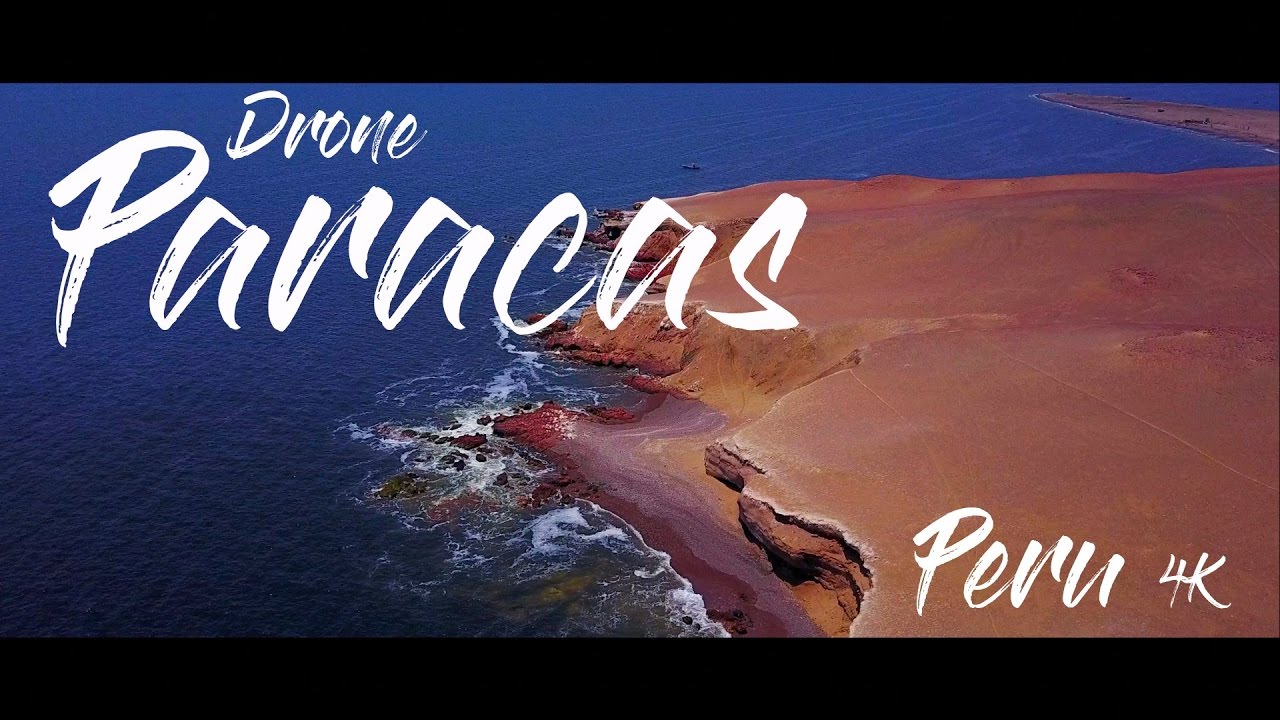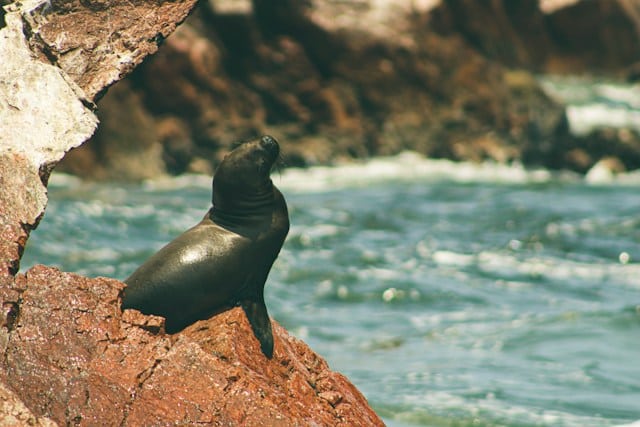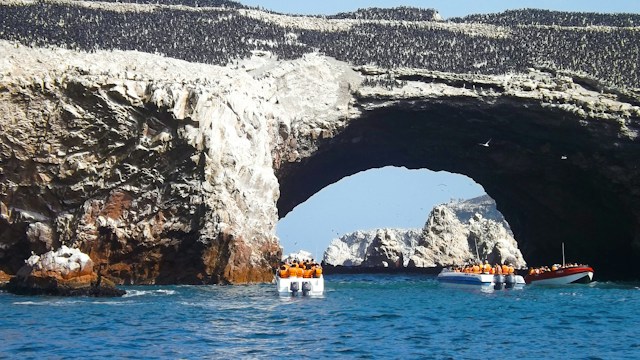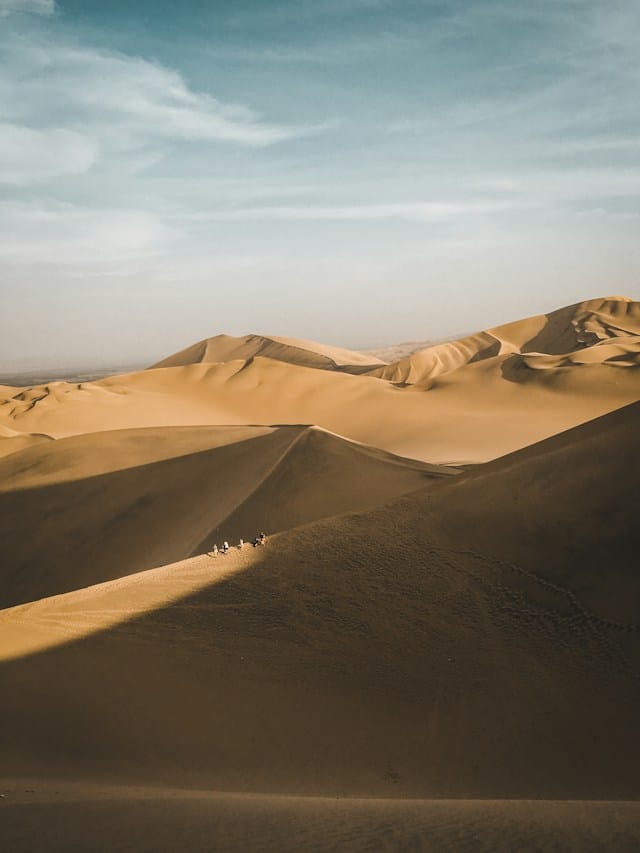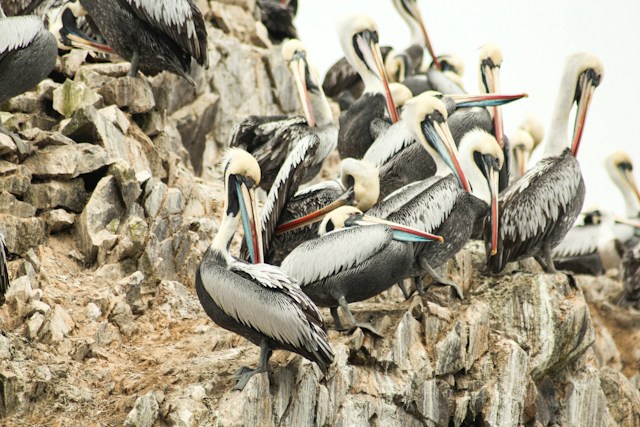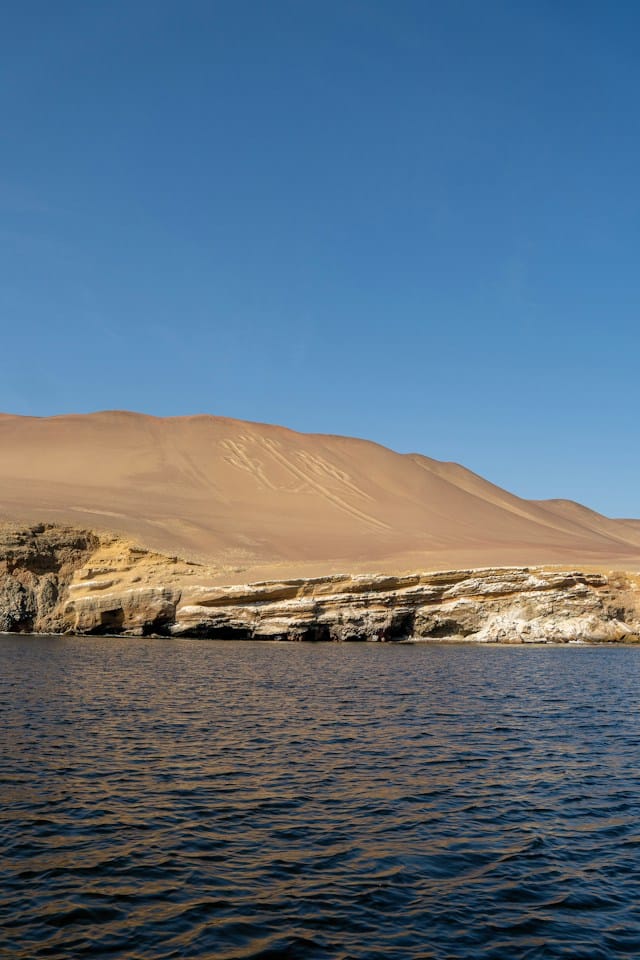Paracas Unveiled: A Comprehensive Travel Guide
A Journey Beyond the Ordinary, Paracas Peru! Dive into this enchanting travel blog where we unravel the secrets of Paracas, a coastal haven nestled along the Pacific. As your travel companion, join me in exploring the breathtaking landscapes, rich cultural tapestry, and thrilling adventures that define Paracas. From the vibrant traditions to the hidden gems, this blog is your insider’s guide to a memorable escape. So, fasten your seatbelts, embrace the wanderlust, and let’s embark on an extraordinary journey through the coastal marvels of Paracas. Are you ready to discover the beauty, culture, and stories that await? Let’s wander together and make your Paracas adventure an unforgettable chapter in your travel diary!
Where is Paracas in Peru?
Ever wondered where paradise meets the Pacific in Peru? Say hello to Paracas! Nestled 146 miles south of Lima, this coastal gem is a symphony of captivating landscapes, biodiversity wonders, and cultural tales. Picture this: a town where every street whispers stories of adventure and tranquility. Paracas isn’t just a dot on the map; it’s a portal to the extraordinary. Think stunning natural reserves, biodiverse havens, and a cultural epicenter all rolled into one. As we unravel the secrets of Paracas, get ready for a journey where every step paints a picture of awe. So, lace up those adventure boots, pack your curiosity, and let’s dive into the coastal enchantment of Paracas. The question isn’t just “Where is Paracas?” It’s “When can we start exploring this slice of Peruvian paradise?”
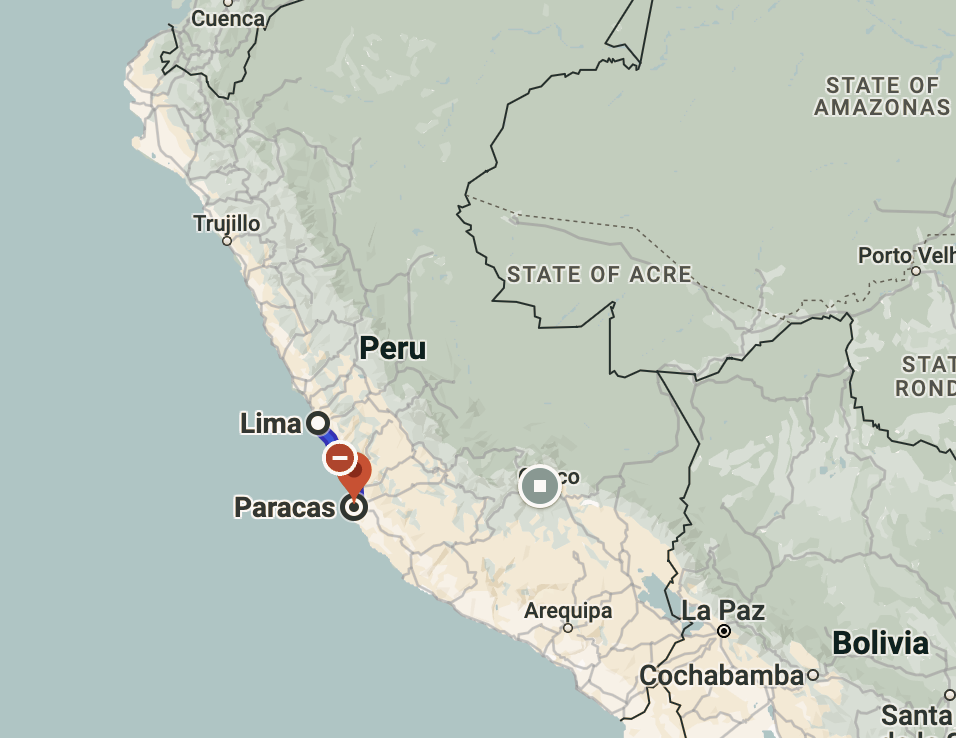
What does Paracas mean?
The word “Paracas” has its origins in the Quechua language, which is an indigenous language spoken in the Andean region of South America. In Quechua, “Paracas” is believed to mean “sand rain” or “sand falling,” likely referring to the fine, windblown sand that characterizes the coastal desert landscape of the Paracas region. This interpretation aligns with the unique geographical features of Paracas, where vast sand dunes meet the Pacific Ocean, creating a distinctive and picturesque environment.
How to get to Paracas from Lima
Traveling from Lima to Paracas Peru is a straightforward journey with several transportation options. Here’s a guide on how to get to Paracas from Lima:
By Bus:
- Duration: The bus journey takes approximately 4 to 5 hours.
- Bus Companies: Various reputable bus companies are operating on this route, including Cruz del Sur, Oltursa, and PeruBus.
- Bus Stations: Buses depart from Lima’s main bus terminals, such as Plaza Norte or Javier Prado.
what activities can we do in Paracas Peru?
- Ballestas Islands Tour:
- Witness the incredible wildlife on a boat tour to the Ballestas Islands, home to sea lions, penguins, and diverse seabird species.
- Paracas National Reserve Exploration:
- Explore the stunning landscapes, red sand beaches, and unique rock formations within the Paracas National Reserve.
- Huacachina Oasis Excursion:
- Experience thrilling activities like dune buggy and sandboarding on the towering dunes of Huacachina Oasis.
- Pisco Tasting Tour:
- Learn about the production of Peru’s iconic spirit, Pisco, with a tasting tour at a local vineyard.
- Paracas Archaeological Museum:
- Gain insights into the region’s history and archaeology by visiting the Paracas Archaeological Museum.
- Candelabro Geoglyph Viewing:
- Admire the mysterious Candelabro geoglyph etched into the desert hillside, offering a captivating view.
- Kite Surfing:
- Experience the thrill of kite surfing in the bay of Paracas for a water adventure.
- Cruise around Paracas Peninsula:
- Enjoy scenic views and observe marine life on a boat or yacht tour around the Paracas Peninsula.
- Relax on El Chaco Beach:
- Unwind on the shores of El Chaco Beach, a popular spot for relaxation and enjoying the Pacific breeze.
- Try Local Seafood:
- Indulge in delicious seafood dishes at waterfront restaurants, savoring fresh catches from the Pacific.
- Tambo Colorado Visit:
- Explore Tambo Colorado, an ancient Inca archaeological site showcasing well-preserved structures and offering a glimpse into Inca history.A Map how to get here
Is Paracas worth visiting?
Certainly! Yes, Paracas is worth visiting for its stunning natural beauty, diverse wildlife on the Ballestas Islands, adventure activities in Huacachina Oasis, cultural exploration, Pisco tasting, and proximity to Lima, making it an ideal destination for various interests.
Is Paracas Peru safe to travel to?
Wondering if Paracas, Peru, is your next safe haven? Absolutely! This coastal gem is a traveler’s sanctuary, but a dash of caution always adds to the adventure. Here are some safety tips for your worry-free exploration:
Stay in the Know: Weather, travel advisories – knowledge is your compass.
Guard Your Treasures: In bustling areas, secure your belongings like a pro – a money belt can be your stylish sidekick.
On the Move: Opt for trusted transportation options. Heard of Cruz del Sur? Top-notch!
Healthy Adventures: Stay hydrated, sunscreen up, and savor local flavors with care.
Cultural Respect: Blend in modest attire, especially at sacred spots.
Emergency Ready: Keep local authorities and embassy contacts handy – just in case.
Hola, Español!: A few Spanish phrases unlock doors and hearts.
Weather Wisdom: Know the climate’s mood – dress accordingly.
Paracas isn’t just safe; it’s your canvas for worry-free wonders. Ready for a secure and sensational journey?
Great beaches near Paracas Peru
Paracas, located along the southern coast of Peru, is known for its stunning coastal landscapes and pristine beaches. Here are some great beaches near Paracas that you may want to explore:
- El Chaco Beach:
- El Chaco Beach is a popular choice for visitors to Paracas. Its calm waters and sandy shores make it an ideal spot for relaxation and enjoying the coastal scenery. The beach is also lined with restaurants and bars, offering a picturesque setting.
- Playa Roja (Red Beach):
- As the name suggests, Playa Roja is known for its distinctive red-colored sands. It’s a unique and visually striking beach, surrounded by cliffs and offering a serene environment.
- Playa Lagunillas:
- Located a bit south of Paracas, Playa Lagunillas is known for its beautiful bay and tranquil waters. The beach is surrounded by hills, creating a picturesque backdrop.
- La Mina Beach:
- La Mina Beach is characterized by its rocky formations and clear blue waters. It’s a quieter beach, perfect for those seeking a more secluded and peaceful atmosphere.
- Playa Yumaque:
- Playa Yumaque is known for its natural beauty and is often less crowded than other beaches. The surrounding cliffs and turquoise waters create a stunning coastal landscape.
- Playa Mendieta:
- Playa Mendieta is another beach near Paracas with golden sands and calm waters. It’s a great spot for a relaxing day by the sea.
- Playa Supay:
- Playa Supay is known for its clean and uncrowded environment. The beach offers a peaceful setting for those looking to escape the hustle and bustle.
These beaches provide diverse experiences, from tranquil environments to unique geological features, making them wonderful additions to your visit to the Paracas region.
PARACAS NATIONAL PARK -PARACAS NATIONAL RESERVE
Paracas National Reserve, often referred to as Paracas National Park, is a protected natural area located on the Paracas Peninsula along the southern coast of Peru. Here are the key features and attractions of this captivating reserve:
- Breathtaking Landscapes:
- Paracas National Reserve is renowned for its striking landscapes, featuring dramatic cliffs, red sand beaches, and expansive desert scenery. The contrast of the arid land against the deep blue waters of the Pacific Ocean is truly mesmerizing.
- Flora and Fauna:
- Despite its arid appearance, the reserve supports a diverse range of wildlife. Visitors can spot various bird species, including flamingos, pelicans, and Humboldt penguins. The reserve is also home to sea lions and other marine life.
- La Catedral:
- One of the notable rock formations within the reserve is La Catedral, a natural arch carved by wind and sea erosion. Though partially collapsed, it remains a captivating sight along the coastline.
- Red Beaches:
- The reserve features beaches with distinctive red sands, creating a unique and picturesque environment. Playa Roja, or Red Beach, is one such beach known for its vibrant color.
- Mirador de Flamencos:
- The Flamencos Viewpoint provides a panoramic vista of the reserve and the Pacific Ocean. It’s an excellent spot for birdwatching, and visitors may have the chance to observe flamingos in the nearby lagoons.
- Archaeological Sites:
- Paracas National Reserve also holds archaeological significance. The reserve has yielded ancient artifacts and burial sites, offering insights into the pre-Columbian Paracas culture.
- Visitor Center:
- The reserve has a visitor center where visitors can learn more about the area’s ecology, history, and conservation efforts. The center provides valuable information for those exploring the reserve.
- Boat Tours to the Ballestas Islands:
- While not within the reserve itself, many boat tours to the Ballestas Islands depart from Paracas, allowing visitors to witness the abundant marine life, including sea lions and seabirds.
Paracas National Reserve is a haven for nature lovers, offering a unique blend of coastal beauty, biodiversity, and cultural heritage. Whether you’re interested in exploring the desert landscape, observing wildlife, or delving into archaeological sites, the reserve provides a rich and varied experience.
What was the Paracas culture art like
The Paracas Peru culture, an ancient civilization that thrived on the southern coast of Peru from approximately 800 BCE to 100 BCE, is renowned for its distinctive and intricate art. Here are key features of Paracas culture art:
Textiles:
-
- Paracas textiles are among the most notable achievements of their art. Intricately woven and embroidered fabrics showcase vibrant colors and intricate patterns. The use of fine fibers and complex techniques reflects the high skill level of Paracas textile artisans.
-

Paracas textiles Peru
Necropolis Textiles:
- Some of the most well-preserved Paracas textiles were found in burial sites known as necropolises. These textiles adorned the deceased and were buried with them. The dry climate of the region contributed to the preservation of these ancient fabrics.

- Iconography:
- Paracas textiles often feature complex iconography, including depictions of animals, mythical creatures, deities, and geometric patterns. The iconography is thought to convey both religious and societal symbolism.
- Elite Mantles:
- Elaborate textiles, known as mantles, were particularly associated with the elite members of Paracas society. These mantles were often large and finely decorated, serving as status symbols and possibly worn during important ceremonies.
- Burial Wrappings:
- Textiles were used not only for clothing but also as wrappings for the bodies of the deceased. The intricate designs on these burial wrappings indicated the individual’s status and possibly their role in society.
- Use of Color:
- Paracas artisans employed a wide range of colors in their textiles, including red, yellow, green, and blue. They achieved these colors using natural dyes derived from local plants and minerals.
- Ceramics:
- While textiles are the most celebrated form of Paracas art, they also produced ceramics. Paracas ceramics are characterized by finely crafted pottery with realistic depictions of animals and stylized human figures. The ceramics were often used as grave goods.

- Trophy Heads:
- Paracas culture engaged in the practice of creating trophy heads, where the heads of enemies or high-status individuals were severed and ritually modified. These trophy heads were sometimes depicted in art, showcasing the importance of warfare and ritual practices in Paracas society.
The exquisite artistry of Paracas’ textiles and ceramics is a testament to the cultural sophistication of this ancient civilization. The preservation of these artifacts provides valuable insights into their beliefs, social structure, and artistic achievements.
Paracas where to eat
Paracas offers a variety of dining options, ranging from seaside seafood restaurants to cozy cafes. Here are some recommendations for places to eat in Paracas:
- La Hacienda Restaurante:
- A popular choice for seafood, La Hacienda offers a diverse menu featuring fresh catches from the Pacific. The restaurant’s location near the waterfront provides a pleasant dining atmosphere.
- El Piloto Restaurant & Bar:
- Known for its seafood dishes and Peruvian cuisine, El Piloto is a restaurant with a relaxed ambiance. It’s a great spot to enjoy a meal while overlooking the bay.
- Chalana Pisco Restobar:
- Chalana Pisco Restobar is known for its Pisco-based cocktails and seafood offerings. The restaurant has a cozy atmosphere and is a popular choice for those looking to experience Pisco tasting.
Paracas how many days?
The number of days to spend in Paracas depends on your interests, the activities you’d like to do, and whether you want to explore the surrounding areas. Here are some general recommendations:
- Day Trip:
- If you’re short on time, a day trip from Lima to Paracas is possible. You can explore the main attractions such as the Paracas National Reserve, take a boat tour to the Ballestas Islands, and visit the town.
- Two Days:
- With two days, you can have a more relaxed visit. Explore the Paracas National Reserve at a leisurely pace, take a boat tour to the Ballestas Islands, and enjoy some time in the town. You might also have the opportunity to visit nearby attractions like the Tambo Colorado archaeological site.
- Three or More Days:
- If you have three or more days, you can delve deeper into the region, allowing time for additional activities like sandboarding in Huacachina Oasis, visiting Pisco vineyards, or exploring more secluded beaches.
Here’s a sample itinerary:
- Day 1:
- Explore the Paracas National Reserve and its attractions.
- Take a boat tour to the Ballestas Islands.
- Enjoy dinner in Paracas.
- Day 2:
- Visit nearby attractions like Tambo Colorado.
- Relax on the beaches or participate in water sports.
- Explore the town and try local seafood.
- Day 3 (if applicable):
- Take a day trip to Huacachina Oasis for sandboarding and dune buggying.
- Visit Pisco vineyards for a tasting experience.
Where to stay in Paracas
Paracas offers a range of accommodation options to suit different preferences and budgets. Here are some recommendations for places to stay in Paracas:
- Hotel Paracas, a Luxury Collection Resort:
- This upscale resort offers luxurious accommodations with stunning views of the bay. Amenities include a spa, swimming pools, and fine dining options.
- DoubleTree by Hilton Resort Paracas:
- Situated along the beach, this Hilton property provides comfortable rooms, multiple swimming pools, and easy access to the waterfront.
- Hotel San Agustín Paracas:
- A mid-range option with comfortable rooms and a pool area. The hotel is located near the beach and offers a pleasant atmosphere.
- Aranwa Paracas Resort & Spa:
- Aranwa offers a luxurious experience with well-appointed rooms, a spa, and multiple dining options. The resort is known for its elegant design.
- Hotel Atoq Paracas:
- The hotel is within walking distance of the main attractions in Paracas.
- Bamboo Paracas Eco Bungalows:
- For a unique experience, consider Bamboo Paracas Eco Bungalows, offering eco-friendly bungalows with a rustic charm.
As we draw the curtain on our exploration of Paracas, Peru, we invite you to turn these words into footsteps. Dive into the enchantment of Paracas – where nature paints landscapes and traditions tell stories. The time is now to transform inspiration into reality. Plan your visit, embrace the coastal splendor, and let the allure of Paracas leave an indelible mark on your travel story. Seize the moment – Paracas awaits your discovery! Start your journey today and experience the extraordinary in this coastal paradise.



